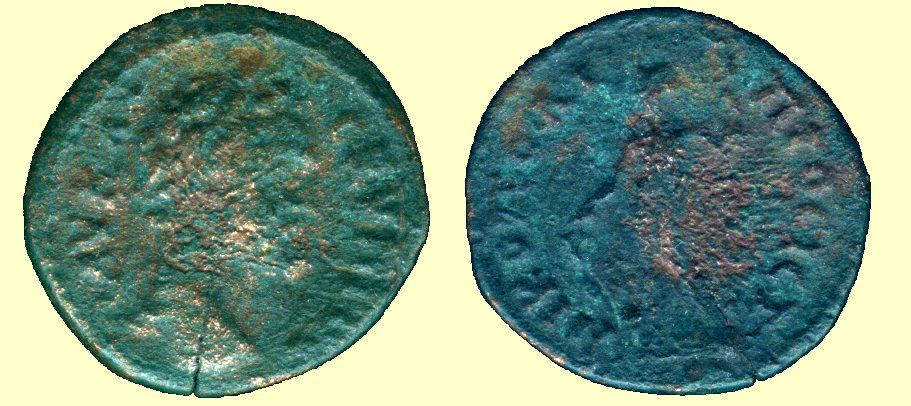
Septimius Severus 193 - 211 A.D.
| Coin Description | Septimius Severus, AE 17 mm , Grade ??, The coin has a slight crack quite visible on the obverse sight but its not all the way trough to the reverse sight. The difference in color between the obverse and the reverse scan is caused by the the fact that the portrait of Severus has a very high relief and that the reverse is pretty flat thus giving less dispersal of light. The obverse scan is nearer to the actual colors of the coin. |
| Obverse | The portrait is of Septimius Severus a laureate head looking right. The legend reads AV KA CEVHPOC with AV meaning Augustus (Romans didn't have a U but used a V) which defines him as the emperor. KA is for Kaisar which is the Greek translation for the Latin word Caesar. CEVHPOC translates as Severos (C being S, H being an Eta and pronounced as E and P being a Rho which is pronounced as an R). The legend is broken which is a sign of the highest respect and signifies him as the senior Augustus. |
| Reverse | Naked Dionysis standing,
turned left, holding thyrsos in left
and bunch of grapes in right hand. The legend reads NIKO |
| Mint | Nikopolis Ad Istrum |
| The Entire Story | Augustus Kaisar Severus with on the reverse Nikopolis ad Istrum with the god Dionysis |
Nikopolis ad Istrum was a Roman town established by the emperor Trajanus after the victory over the Dacis tribe (Nikopolis means city of victory). It enjoyed its vigorous growth under the reign of the emperors Constantine the Great and Justinian I. Archaeological excavations uncovered the fortified walls, main streets, many public buildings and dwellings of common people, thermaes etc.